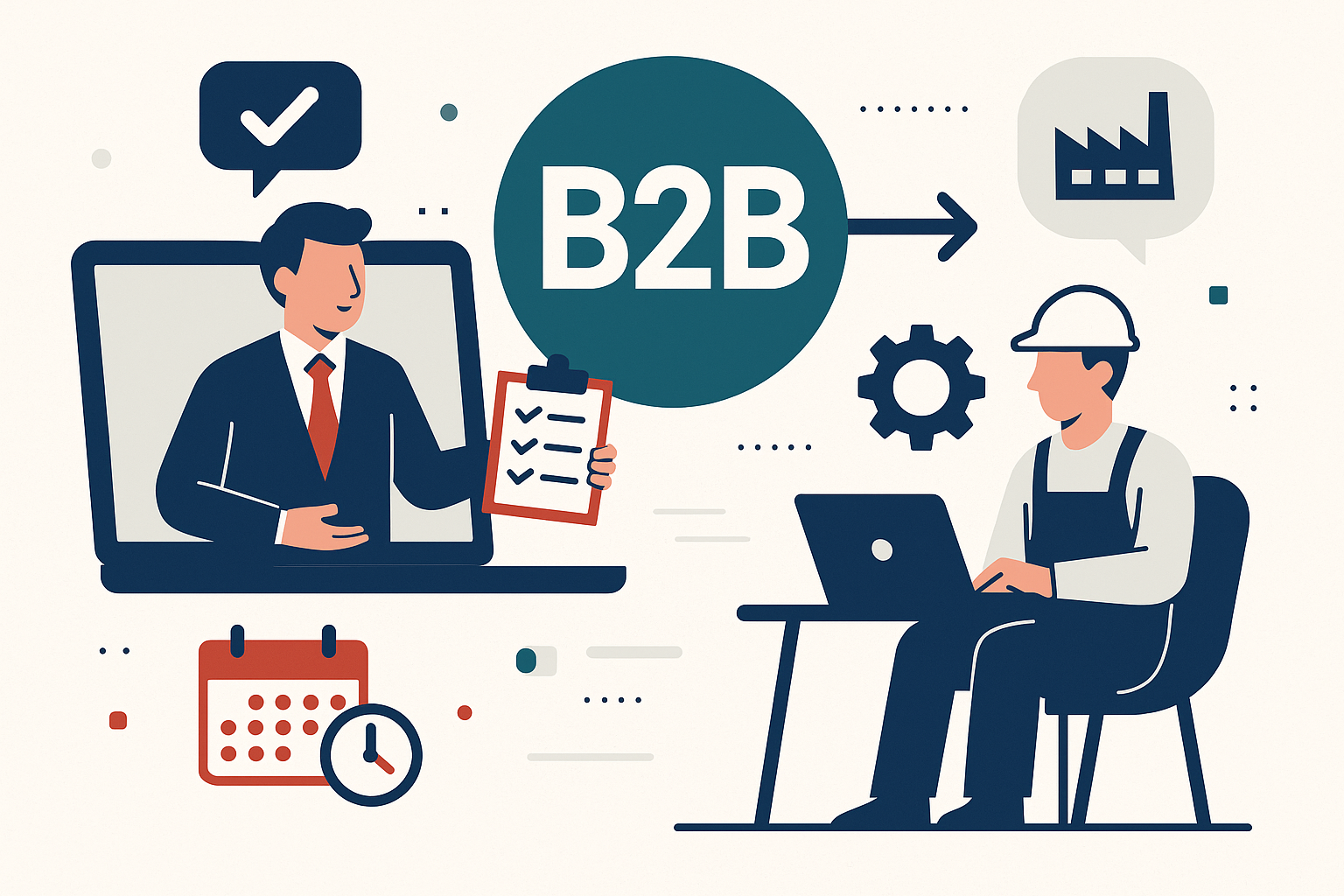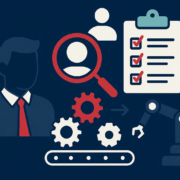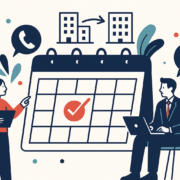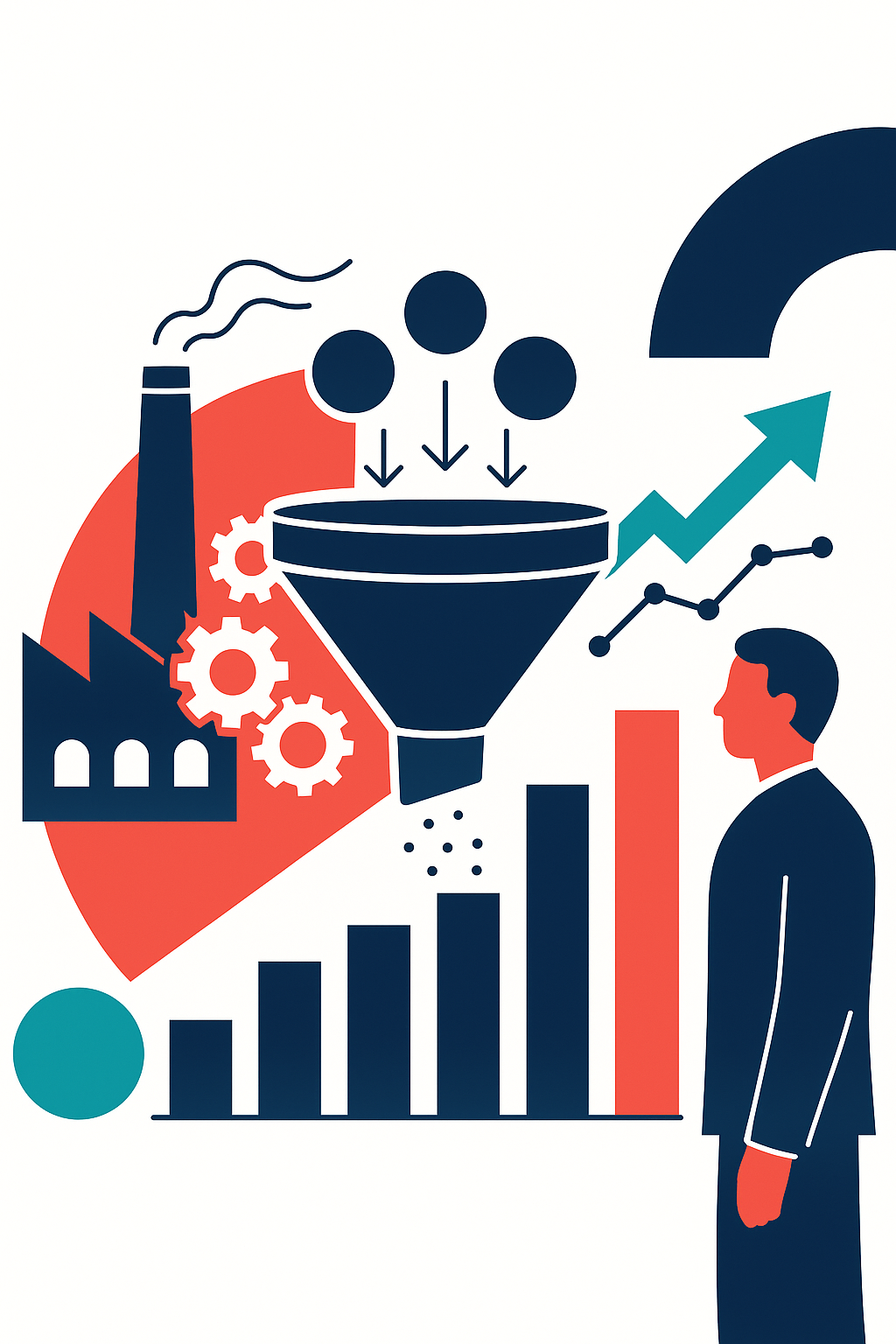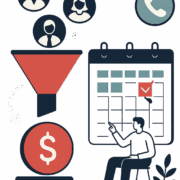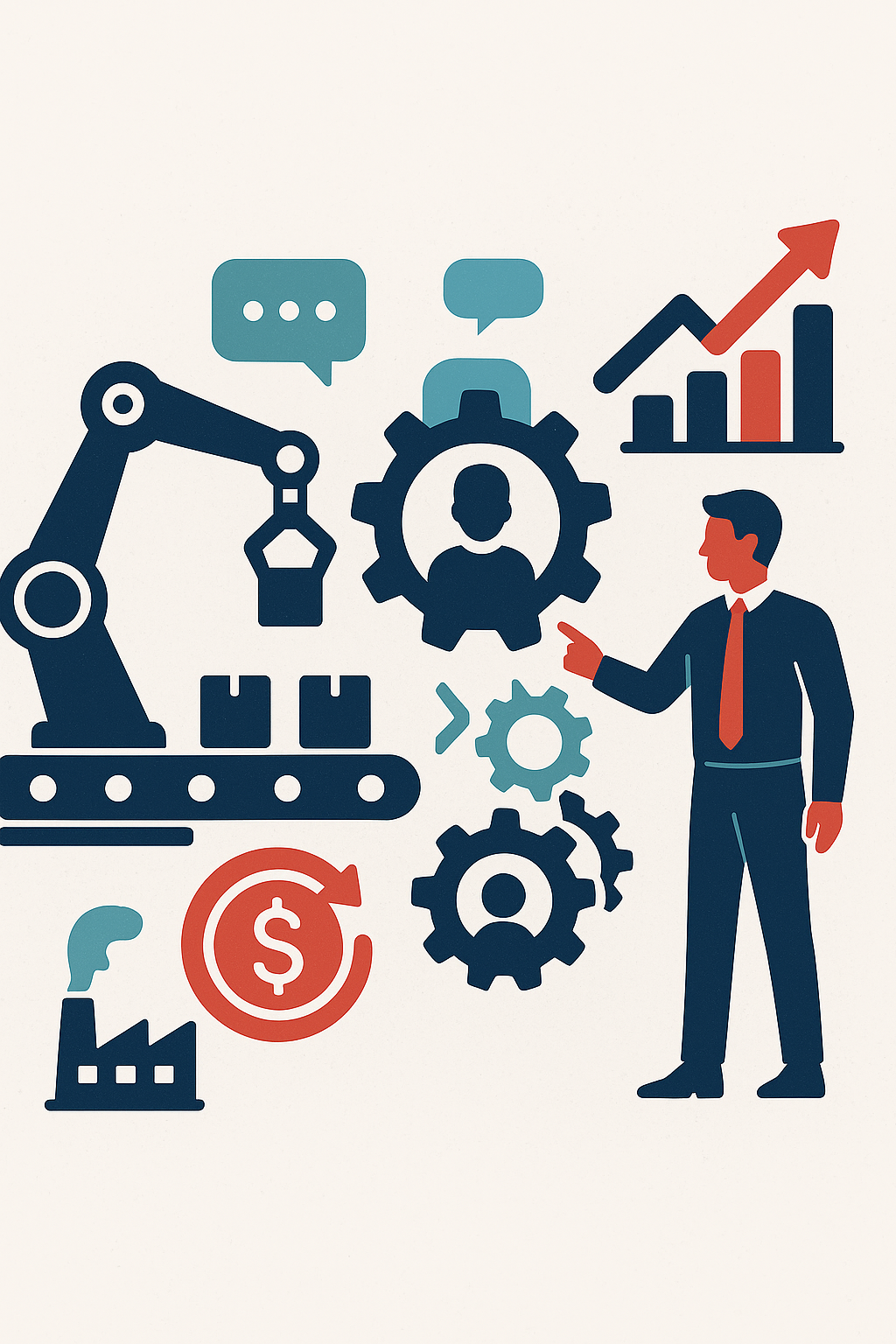Streamlined B2B Appointment Setting for Manufacturing & Industrial Firms
Why Appointment Setting is the Key to Consistent Growth in Industrial Sales
In the industrial space, sales cycles are long, decision-makers are hard to reach, and competition is fierce. Whether you manufacture heavy equipment, supply custom components, or provide complex industrial services, your growth depends on one thing: conversations with the right buyers.
But for most industrial sales teams, getting that first meeting is the hardest part.
If you’re in B2B manufacturing or industrial services, you’ve likely experienced these challenges:
- Sales reps spend too much time prospecting and not enough time closing
- Inconsistent lead flow from trade shows or referrals
- Difficulty reaching plant managers, operations directors, or procurement leaders
- A lack of internal bandwidth to scale outbound outreach effectively
That’s where a proven B2B appointment setting workflow becomes a game-changer.
In this article, we’ll explain exactly how Sapper helps industrial clients build predictable, scalable appointment-setting engines. We’ll walk through each workflow phase—from ICP development to outreach and performance tracking—and show how this strategy delivers real results in the manufacturing space.
The Importance of a Defined Workflow in Industrial Sales
Before we discuss the specifics, it’s worth noting something most industrial companies already know: your target buyer is not easy to reach.
They’re often in the field, overseeing operations, or working in environments where they don’t check their inbox every five minutes. Traditional lead gen channels like pay-per-click or cold calling might help build awareness, but they rarely consistently result in qualified sales meetings.
That’s why a defined, repeatable appointment setting workflow is essential. It turns outbound outreach from a guessing game into a measurable growth engine.
Phase 1: Defining the Ideal Customer Profile (ICP) and Buyer Personas
A successful appointment setting campaign starts with clarity.
At Sapper, we help our industrial clients define a detailed Ideal Customer Profile (ICP) based on their:
- Industry verticals (e.g., automotive, food & beverage, aerospace)
- Company size and revenue range
- Geographic reach
- Existing high-value accounts
- Pain points addressed by their product or service
From there, we map out specific buyer personas. These are the roles most likely to make or influence buying decisions, such as:
- Plant Managers
- Operations Directors
- Procurement Leads
- VPs of Manufacturing
- Heads of Engineering
Once we know who to target, we can tailor the messaging and outreach strategy for real relevance.
Pro tip: Don’t just guess who your buyers are. Look at your past deals, talk to your sales team, and study where deals stall in the pipeline. That insight informs a much more effective outreach strategy.
Phase 2: Building the Right Data Infrastructure
No workflow is effective without reliable data.
That’s why the next step is sourcing accurate contact information for your target buyers using tools like:
- LinkedIn Sales Navigator
- Industry-specific databases
- Proprietary lead lists built by Sapper’s research team
We segment contacts based on job title, industry, and company size, so each message can feel personalized—even at scale.
This level of segmentation is especially powerful in the industrial space, where a VP of Manufacturing at a food plant has very different needs than a Plant Manager at an aerospace facility.
Phase 3: Crafting Targeted Messaging Sequences
One of the biggest mistakes companies make in appointment setting is treating it like cold calling. That’s a quick way to get ignored.
At Sapper, our messaging strategy is rooted in empathy and relevance. We’re not just asking for a meeting—we’re starting a conversation.
Each sequence includes:
- A personalized intro message that references the contact’s role or company
- Follow-ups that build value and speak to specific pain points
- Soft CTAs that make it easy to engage without pressure
Here’s an example sequence we used with a packaging equipment manufacturer:
Initial Message
Hi [First Name], I work with packaging manufacturers like [Company Name] to improve production flow and reduce downtime. Thought it might be worth connecting and swapping insights.
Follow-up 1
Thanks for connecting. How is your team handling throughput challenges with current equipment? We’ve been helping similar companies increase OEE by 10–15% with minimal disruption. Would it make sense to share how?
Follow-up 2
I understand if the timing isn’t ideal. I’m happy to share a short overview in case it’s helpful down the road. There is no pitch—just insights we’ve seen work well for similar teams.
Every touchpoint is written to feel human, relevant, and useful—not robotic or salesy.
Phase 4: Channel Selection and Execution
We don’t believe in a one-size-fits-all approach. The right outreach channel depends on your audience, offer, and goals.
For most industrial clients, we recommend a multi-channel appointment setting strategy that includes:
- LinkedIn: Especially effective for targeting operations or procurement professionals in mid-market or enterprise companies.
- Email: Still a workhorse in B2B. Best when combined with custom messaging and segmentation.
- Phone (as a follow-up tool): This tool is used more sparingly but can be effective when warming up already-engaged contacts.
Sapper’s team manages all of this daily. We handle outreach volume, message delivery, timing, and response management—so your internal team doesn’t have to.
Phase 5: Lead Qualification and Calendar Booking
When a prospect engages, our job isn’t done—it’s just beginning.
Every response is handled by our team to ensure:
- The contact fits your ICP
- There’s a real need or interest
- The opportunity is worth your sales team’s time
Once qualified, we schedule meetings directly on your team’s calendar, with all the context they need to jump in and close.
This step is what separates Sapper from appointment setting providers who simply send leads your way and walk away. We focus on quality, not just quantity.
Phase 6: Ongoing Optimization and Reporting
Even a great campaign can get better.
We monitor every step of the workflow and provide clients with real-time visibility into:
- Connection and response rates
- Message-level performance
- Meetings booked by persona or industry
- Show-up rates and deal progression
If a message isn’t working, we test a new angle. If a persona underperforms, we shift focus.
This agile approach means our clients are never stuck with a stagnant outreach program. It keeps your pipeline fresh and your results improving month over month.
Real-World Results in B2B Manufacturing
Let’s look at how this workflow performed for three recent Sapper clients in the industrial space.
1. Metal Fabrication Company
Goal: Book meetings with engineers and procurement leaders at OEMs
Results:
- 145 meetings booked in 5 months
- 37% email open rate
- $5.4M in net-new pipeline
- 3 deals closed within the first 90 days
2. Automated Systems Integrator
Goal: Break into food processing and logistics companies
Results:
- 58% LinkedIn connection acceptance rate
- 23% response rate
- 12–18 qualified meetings per month
- 2 enterprise wins valued over $1.1M
3. Industrial Cleaning Solutions Provider
Goal: Engage plant managers in the Midwest
Results:
- 35% increase in show rate after sequence optimization
- Over 100 meetings booked in Q1
- Consistent $1M+ monthly pipeline value
In each case, our workflow helped clients stop guessing where their next lead would come from and start building a reliable outbound engine.
Common Mistakes to Avoid in B2B Appointment Setting
To wrap up, here are a few common traps we help clients avoid:
1. Trying to do everything in-house: Most internal teams don’t have the bandwidth to manage daily outreach, follow-ups, and optimization. Outsourcing lets your closers focus on closing.
2. Over-automating: Personalization matters. Buyers can spot generic outreach from a mile away. Even at scale, it’s possible to feel human.
3. Focusing on volume over quality: More messages don’t mean more meetings. Smart targeting and refined messaging always win.
4. Giving up too soon: Industrial sales take time. Success isn’t always immediate, but with consistent effort and data-driven adjustments, results follow.
Final Thoughts: Why Manufacturers Need a Workflow Like This
The future of B2B sales in industrial sectors doesn’t belong to the loudest brand—it belongs to the most consistent.
With trade shows and referrals offering limited predictability, manufacturers need a modern, scalable approach to filling their pipeline. That means knowing who to target, how to reach them, and what to say once you do.
Sapper’s B2B appointment setting workflow gives industrial companies the tools and team to do exactly that.
If you’re ready to stop guessing and start booking qualified meetings every month, it might be time to implement this workflow for your business.
Let’s build your pipeline—one conversation at a time.

